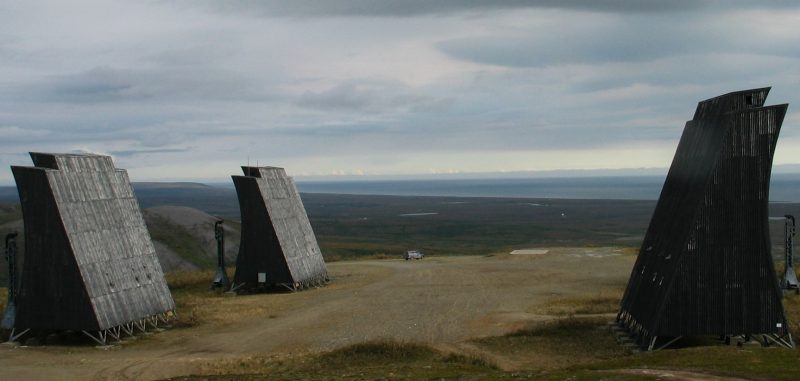The Northwest Alaskan city of Nome has an idea for a unique tourist attraction.
A cluster of communications antennae, built during the Cold War to warn the US of a missile attack by the Soviet Union, forms the permanent centerpiece of a recreation and tourist area overlooking the city.
The White Alice Communications site has not been in operation since 1979. The site, built on the crest of the Anvil Mountains, was contaminated with asbestos, lead, polychlorinated biphenyl and spilled fuel.
The city has a fondness for the antennae and for what they represent. To people in Nome, the antennae symbolize a connection with the outside world. Nome is less than 150 miles from Russia; the antennae provide a reminder of that link to the past. To the people of Nome, the antennae are a sign that the city still matters.
The antennae still provide a useful function. Pilots use the antennae as a navigational aid in a region with few other landmarks.
The antennae were built for a technology called “tropospheric scatter.” That technology was dropped in favor of the satellite.
Former Nome Mayor John Handeland has been working to preserve the antennae since the mid-1980s.
“I probably would have chained myself to a tower if the Air Force came to take them down,” said Handeland, who now manages Nome Joint Utilities.
Since the 80s, the Air Force and Army Corps of Engineers have been demolishing and cleaning up the 71 White Alice sites in Alaska. Over 8 million tons of contaminated soil were removed and shipped to Arlington, Oregon in 2010-2011. The maintenance buildings and large fuel tanks are gone, too.
All that is left are the antennae.
The city has work to do before it can properly take possession of the land. The site is currently owned by the Air Force and Sitnasuak Native Corp. Under the Alaska Native Claims Settlement Act, the Sitnasuak Native Corp has the first rights to the 12-acre property.
In 2012, Sitnasuak’s board voted to request that the Air Force remove the antennae. The corporation was worried about liability should anyone be injured on the structures. They were also considering making room for new telecommunications infrastructure on the site.
The City Council voted in 2012 to approve a land swap with Sitnasuak. The city was willing to give titles to land in Nome near the Bonanza Express gas station and the Airport Pizza restaurant.
The value of the land is $106,000. The White Alice site is valued at $75,000.
According to Trip Advisor, visiting the antennae is the number one thing to do when visiting Nome. Locals like to gather berries, hike and gather quviut – a warm musk ox fur that catches on the willow shrubs when animals pass.
People walk their dogs and jog on the path that connects the antennae to the city. The view includes the City, Sledge Island, a wind farm and the back of Anvil Mountain.
“The White Alice site is beloved by all for sure,” said Megan Alvanna Stimpfle, who was born and raised in Nome and is both chief of the King Island tribe and a commissioner for the Port of Nome. “It inspires mystery and reminds us of the past and our location in the world.”
Should the land swap occur, the antennae would be a site of historical interest in the city’s planned recreation site. The plans include barbeque grills, informational signs, picnic tables, a boardwalk, parking and volleyball nets.
The budget is small for the project is small compared to the millions of dollars spent by the US military to erect and then dismantle the site. Due to Alaska’s fiscal woes, Anvil Mountain is not likely to be seeing any major government-backed action anytime in the near future.
“We’re trying to do this on a relatively inexpensive basis,” Moran said. “The taxpayers would not be thrilled about throwing millions of dollars at this.”
